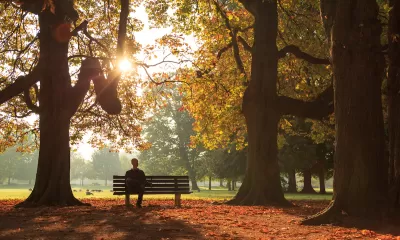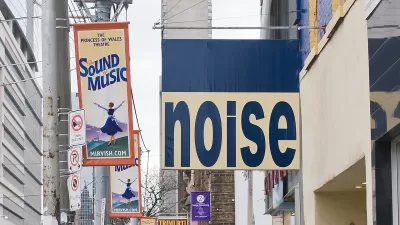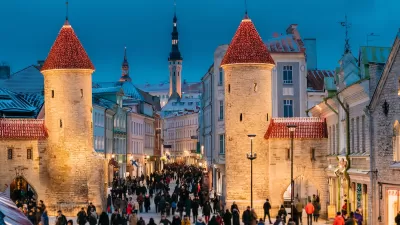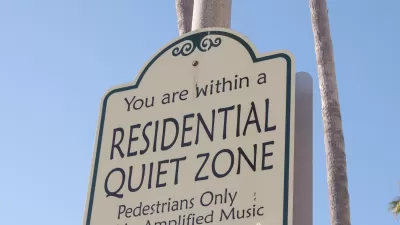Environmental noise can pose serious health risks ranging from sleep disruptions to higher blood pressure.

“In the world of occupational health, there’s long been awareness around the risk of noise-induced hearing loss, and today noise protection is a key part of workplace health and safety,” writes Emma Durand-Wood in a piece for Strong Towns.
But public health officials know less about “environmental noise,” the everyday sources of urban sound defined by the World Health Organization as “unwanted or harmful outdoor sound created by human activities, including noise from road, rail, airports and from industrial sites.”
More recently, research results have elevated noise pollution from a nuisance to a potentially severe health risk. “We now know that higher levels of environmental noise raise heart rate and blood pressure, cause harmful sleep interruptions, and are linked to cardiovascular disease, dementia, and cognitive impairment in children, among others.” In many U.S. cities, the racial and economic disparities that dictate where people live mean lower-income communities are often more exposed to excessive noise in addition to other harmful pollution.
Some urban noise is inevitable. But what can cities do to mitigate the damage and dampen unpleasant sounds? For one, they can plant more trees. “Adding trees or extra layers of vegetation alongside traditional noise barrier walls can significantly boost noise reduction.”
Durand-Wood also recommends permitting multifamily housing in more places—“Folks who prefer to or must live somewhere other than a single-family home shouldn’t be relegated to the noisiest areas, but in many places, multi-family housing is only being built along major corridors”—and reducing vehicle speeds and speed limits, which is shown to reduce the amount of associated road noise. Through relatively simple interventions, “Urban environments don’t need to be inherently noisy and harmful.”
FULL STORY: Why Are Cities So Noisy? And Can We Do Anything About It?

Trump Administration Could Effectively End Housing Voucher Program
Federal officials are eyeing major cuts to the Section 8 program that helps millions of low-income households pay rent.

Planetizen Federal Action Tracker
A weekly monitor of how Trump’s orders and actions are impacting planners and planning in America.

Canada vs. Kamala: Whose Liberal Housing Platform Comes Out on Top?
As Canada votes for a new Prime Minister, what can America learn from the leading liberal candidate of its neighbor to the north?

Washington State’s Parking Reform Law Could Unlock ‘Countless’ Acres for New Housing
A law that limits how much parking cities can require for residential amd commercial developments could lead to a construction boom.

Wildlife Rebounds After the Eaton Fire
Following the devastation of the Eaton Fire, the return of wildlife and the regrowth of native plants are offering powerful signs of resilience and renewal.

LA to Replace Inglewood Light Rail Project With Bus Shuttles
LA Metro says the change is in response to community engagement and that the new design will be ready before the 2028 Olympic Games.
Urban Design for Planners 1: Software Tools
This six-course series explores essential urban design concepts using open source software and equips planners with the tools they need to participate fully in the urban design process.
Planning for Universal Design
Learn the tools for implementing Universal Design in planning regulations.
Central Transportation Planning Staff/Boston Region MPO
Heyer Gruel & Associates PA
Institute for Housing and Urban Development Studies (IHS)
City of Grandview
Harvard GSD Executive Education
Regional Transportation Commission of Southern Nevada
Toledo-Lucas County Plan Commissions





























